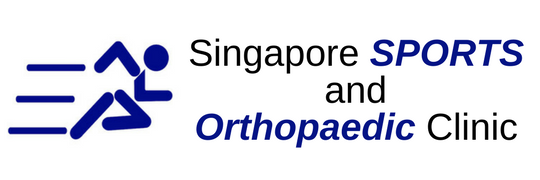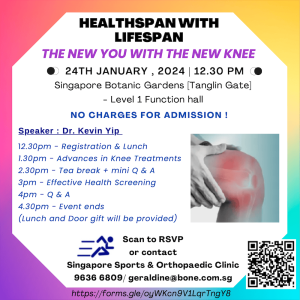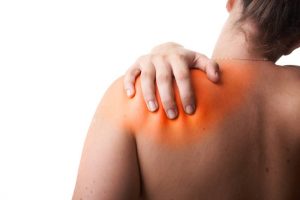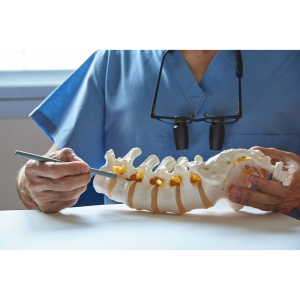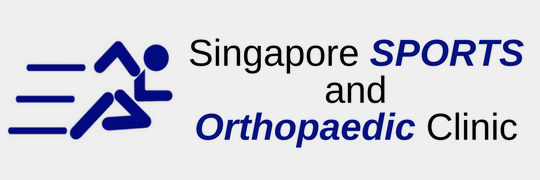60-90% of the population will experience back pain in Singapore. Chances are you or someone you know has suffered from back pain at some point in their life. It can catch you by surprise and drastically limit your mobility and function. 1 in 2 employees took 4-7 days off work for their back pain in the past year. It decreases productivity and one’s quality of life.
However, back pain doesn’t have to be the norm. At the Singapore Sports and Orthopaedic Clinic, our experts can help you bounce back from back pain and prevent future incidents.
What Causes Back Pain?
The back is a complicated structure, consisting of neural networks, the spine, and muscles.
However, everything in the body is connected. Back pain may be caused by a tight muscle, structural abnormalities, neurological issues such as nerve compression, and more.
The spine consists of small bones called vertebrae. In between each bone is a disc. These discs prevent bone-on-bone contact, as well as act as shock-absorbers. Within the spine is the spinal cord. The spinal cord contains the nerves that connect the central nervous system to the rest of the body, allowing your brain to communicate to your muscles and joints to perform certain movements.
Further, muscles connect to various points of the spine and pelvis. The condition of these muscles, such as strength and flexibility, can impact your posture and alignment. If these muscles aren’t functioning properly, back pain may occur.
There are a variety of causes of back pain. Some of the most common causes include a slipped disc, osteoarthritis, poor posture, and tight muscles.
A Slipped Disc
A slipped disc, or herniated disc, is the displacement of the shock absorbing disc in between the spinal vertebrae. It may occur due to twisting or moving incorrectly or due to wear and tear over time. Consequently, it may place pressure on nearby nerves.
‘Sciatica’ is the common term used in conjunction with a slipped disc condition. The disc may place pressure on the sciatic nerve, causing numbness, pain, tingling, and weakness to occur down the legs.
Osteoarthritis
Osteoarthritis is the wearing down of the protective cartilage between bones. In the spine, it is often due to the wearing down of the protective discs. With age, these discs naturally become dehydrated. Some refer to this as ‘degenerative disc disease.’
It frequently occurs in the neck or low back, and may cause varying degrees of pain and functional limitations.
Poor Posture
Your body is made to move a certain way. Further, your joints, muscles, and tissues are optimized for proper posture. Unfortunately, a lot of people lack proper posture.
Today, many people lead fairly sedentary lives. We sit at desks all day, jeopardizing our posture and causing certain muscles to shorten. Flexibility and strength decrease.
When we place our body in unnatural positions, dysfunctions occur. For example, if you are leaning forward all day with your head protruding toward your computer screen, you are placing stress on your neck and shoulder muscles, bones, and tissues.
Bad posture can also lead to added stress on the lower back. The body isn’t made to sit in such positions for prolonged periods. And as much as it tries to adapt, back pain is often inevitable without proper intervention or education.
Tight Muscles
Sitting for long periods may also contribute to tight muscles. The hamstrings, hip flexors, and piriformis muscles may become tense or shortened. Due to their attachment points and locations, these muscles can pull on the pelvis and spine causing pain.
Frequently called ‘Piriformis Syndrome,’ the piriformis muscle may spasm and compress the sciatic nerve creating radiating pain down the legs.
However, sports doctor can educate you and help you overcome these conditions. With proper treatment and care, you can decrease and eliminate your back pain issues.
How is Back Pain Treated in Singapore?
Back pain is treated in a number of ways. It frequently depends on the cause.
Pain relievers, such as over-the-counter NSAIDs, may help decrease initial pain and inflammation. However, it isn’t recommended to use these medications in the long-term. Negative side-effects, including gastrointestinal issues, may occur with chronic use.
Exercise, supervised and provided by a trained professional, can help decrease your risk of back pain and eliminate future injuries. Frequently, back pain in Singapore is caused by inactivity and muscle weakness.
The most common form of rehab exercise for back pain involves the strengthening of the neglected transverse abdominals, or TA. The TA muscles are the deep and lower core muscles. They help support and stabilize the spine and pelvis, acting as a girdle. When this muscle is weak, we try to compensate in other ways. However, this often results in injury and pain, specifically in the low back.
A back pain exercise program will focus on strengthening these abdominal muscles, as well as stretching out shortened or tight muscles. Doing so helps reduce pain and dysfunction of the spine. A basic TA exercise to get you started involves:
- Lying face up, with your knees bent and your feet planted on the ground.
- Imagine a tightrope pulling your hip bones together or stopping the flow of urine. You can feel with your fingers in between your hip bones to determine if you are tightening your TA muscle or not. Your stomach should not bulge upward, just tighten.
- Your low back should remain on the ground or bed. Make sure to keep breathing throughout the exercise. A lot of people tend to hold their breath. However, this is incorrect.
- Try holding the contraction for 5 seconds to start. Build up to 10 second holds. Perform the exercise 10-12 times and at least 2-3 times per day.
Common problematic muscles that may also lead to back pain, include the hamstrings, hip flexors, and piriformis. The hamstrings or hip flexors may become tight, which may pull on the pelvis. In turn, this creates alignment issues. Your lower back may become under stress in this unnatural position. Thus, pain may occur. To correct these issues, your sports doctor will prescribe exercises to stretch out and elongate these muscles. They may also use manual techniques to promote healing and to release muscular tension.
The piriformis, as aforementioned, can spasm and compress the sciatic nerve, causing back pain and radiating pain down the legs. Myofascial release techniques and stretches can help release this small muscle, reducing and preventing future incidences.
In combination with exercise, a manual therapist or sport doctor can perform joint manipulations, traction, myofascial release, and other techniques to help alleviate your pain levels. Each treatment protocol is suited to your particular needs.
In severe cases and where other treatment options fail to work, surgery may be used as a last resort. At the Singapore Sports and Orthopaedic Clinic, our sports doctor are qualified to perform such surgeries. They can prepare you before surgery and help guide recovery post-surgery.
Types of Back Surgery
There are many types of back surgery. Again, it depends on the cause of your back pain as to what kind of surgery you have. Also, surgery is only considered when other interventions have failed to work. The 3 most common surgeries include:
Discectomy: This surgery may be performed when an individual has a slipped disc. The doctors removes the damaged part of the disc.
Laminectomy: Spinal stenosis is the narrowing of the spinal column, which can cause neural issues to arise. In this type of surgery, the lamina portion of the spine is removed to relieve pressure on the spinal cord.
Spinal Fusion: 2 or more vertebrae are fused together in this type of surgery. It limits movement between the 2 vertebrae, reducing pain brought on by the motion of these 2 bones. This is often done in cases where the spine has been damaged or a deformity has occurred.
Your sports doctor will thoroughly explain the surgery prior to. Again, these surgeries are only performed when all other interventions and treatments have been unsuccessful. Frequently, surgery will improve one’s pain levels. However, in some cases, it may not fully fix the problem. Exercises and other treatment protocols can help manage the remaining pain post-surgery.
Orthopaedic Care & Treatment of Back Pain in Singapore
At the Singapore Sports and Orthopaedic Clinic, our injury experts can help you thwart back pain in Singapore and get you back to your regular activities.
Your sport doctor will conduct a thorough assessment. From their assessment, they will come up with an appropriate treatment plan, including exercise, manual techniques, and education. Call or visit our clinic today! Regain back control of your life and rid yourself of back pain for good.

